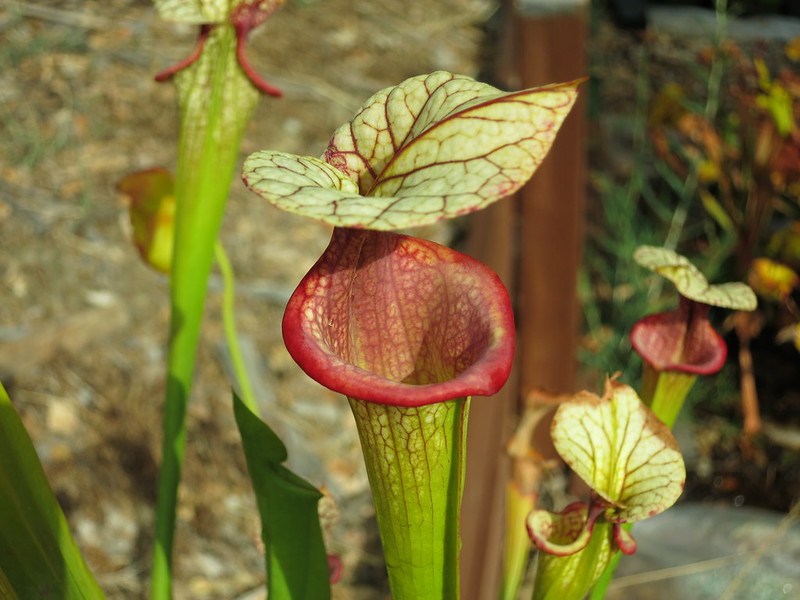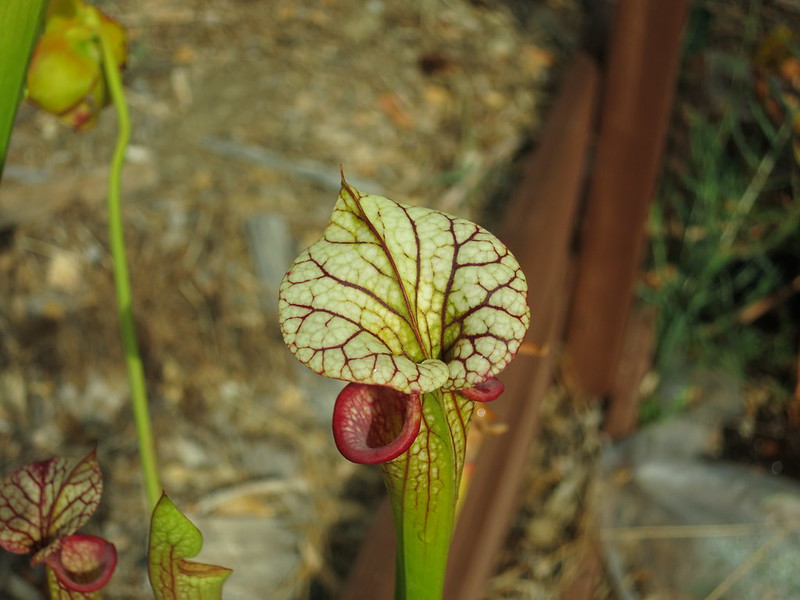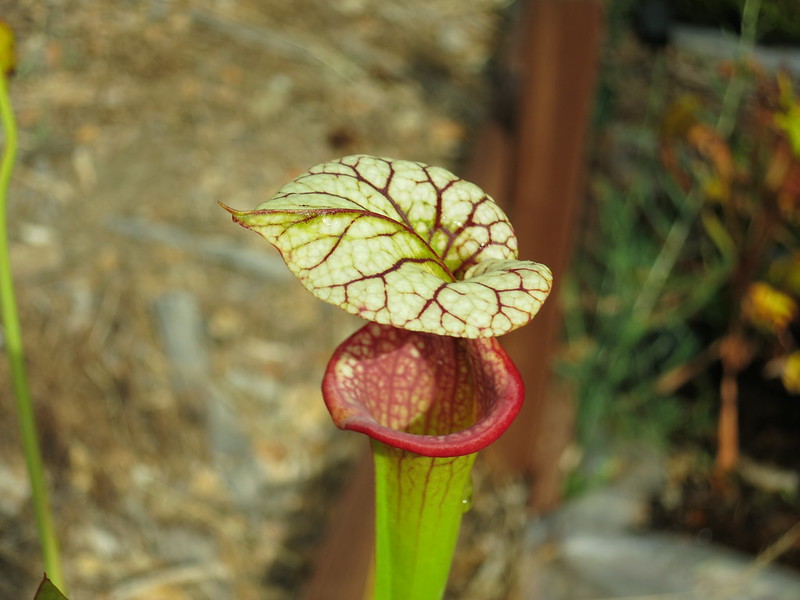- Mon Jul 31, 2017 5:35 pm
#299759
The origin of this plant into cultivation is a very contentious one, but back in the 1980's when it was acquired, it was common practice to dig up plants from the wild. If we want to go back to the 1960's when carnivorous plants were just starting to gain popularity, digging up plants and selling them commercially was common practice. At the time, there were so many square miles upon square miles of plants, who would have thought that the vast majority of them would disappear in a 50 year period to construction and agriculture? Besides, even if you dug them up and sold them, there's so many plants that there's no way we could possibly wipe them out, right?
Sadly, as of the late 1990's, there's an estimated 5% of the original habitat left and it turns out digging up plants as a commercial/hobby venture helped decimate wild populations. It wasn't until the early 1990's that the hobbyist caught up with convservationists regarding sustainable acquisition practices (and as an aside, hobbyists still dig up plants from the wild to this very day, and such activities continue to cause tension between entities protecting the plants in the wild and horticulturalists). There was an infamous case in which a nursery in New York illegally dug up an entire population of the endangered S. oreophila to sell them off, and this action alone wiped out an entire population! At the time, they didn't know how to grow S. oreophila and to this day, I don't know of anyone who has plants that survived this illegal activity.
Did I mention that the origin of Adrian Slack is a very contentious issue? LOL Anyways, back to the story of Adrian Slack. In the 1980's, the late Legend Bob Hanrahan found this plant growing wild near the freeway in Santa Rosa Co, FL, so he dug it up and planted onto his private property. Years later, that same site turned into a Gas Station, but the plant was preserved and well cared for on his land. On one hand, had he not dug this plant up, it would have never existed. On the other hand, had the site not been destroyed, cherry-picking out amazing clones from the wild bottle-necks the population and disrupts the already fragile, struggling habitat. You can't just go back years later and plant Adrian Slack back, this can introduce pests, diseases, and invasive weeds! Wetland habitats are very fragile, and even seemingly small things like digging up a few plants here and there can have grave consequences to the entire ecosystem over time. It also makes creates a mindset among collectors that this behavior is okay, so imagine if all 100,000+ collectors did this sort of thing to the very few plants left in the wild! From a moral standpoint, it's very difficult to justify digging up a plant unless you're there the day the bulldozers are going to plow everything over. On the other hand, had Bob not dug up this plant, it would have gone extinct, and surely there are jaw dropping hybrids and species that we never got a chance to see or breed with!
Fortunately, there's no need to go dig up plants in the wild today. Among collectors, conservatories, and the US government, we have an incredible genetically diverse sample of hundreds of populations in cultivation. In fact, with regards to Sarracenias alone, I'd like to boast that the amount genetic diversity we have in cultivation far exceeds that of cultivated tomatoes, corn, and many other food crops that are poorly maintained from a genetic standpoint! While you probably won't be able to get Sarracenia genetics from government entities, countless unique clones of Sarracenia species/varieties and hybrids are widely available to the general public via carnivorous plant companies, vendors, and private collectors. Many of us have distributed these genetics countless people!
Okay, so now that we got that out of the way, one last thing to mention before I post pics: I have heard rumors that S. Adrian Slack can't color up well outdoors here in Northern California and under other outdoor grow conditions. Please note that is a crock of SH*T! The traps below aren't at their fullest color potential yet, but they are pretty darn colorful, just to set the record straight.
S. 'Adrian Slack' Santa Rosa Co, FL, photos taken 7/30/17. Plants below are divisions from the original plant, I've heard there's a very high chance of mutations (both good and bad) when a single meristem is placed into tissue culture and multipled beyond 10,000 plants. The proper way to keep a line from offtypes in vitro is to multiple a single meristem no more than to 10,000 plants. Fortunately, all tissue cultured plants of Adrian Slack to this day came from a small batch of less than a couple hundred, but you never know:

This is a beauty, not quite a beast:

Itching to make jaw dropping hybrids? This plant alone has created some stunning hybrids many of us wouldn't have ever dreamed possible:


Sadly, as of the late 1990's, there's an estimated 5% of the original habitat left and it turns out digging up plants as a commercial/hobby venture helped decimate wild populations. It wasn't until the early 1990's that the hobbyist caught up with convservationists regarding sustainable acquisition practices (and as an aside, hobbyists still dig up plants from the wild to this very day, and such activities continue to cause tension between entities protecting the plants in the wild and horticulturalists). There was an infamous case in which a nursery in New York illegally dug up an entire population of the endangered S. oreophila to sell them off, and this action alone wiped out an entire population! At the time, they didn't know how to grow S. oreophila and to this day, I don't know of anyone who has plants that survived this illegal activity.
Did I mention that the origin of Adrian Slack is a very contentious issue? LOL Anyways, back to the story of Adrian Slack. In the 1980's, the late Legend Bob Hanrahan found this plant growing wild near the freeway in Santa Rosa Co, FL, so he dug it up and planted onto his private property. Years later, that same site turned into a Gas Station, but the plant was preserved and well cared for on his land. On one hand, had he not dug this plant up, it would have never existed. On the other hand, had the site not been destroyed, cherry-picking out amazing clones from the wild bottle-necks the population and disrupts the already fragile, struggling habitat. You can't just go back years later and plant Adrian Slack back, this can introduce pests, diseases, and invasive weeds! Wetland habitats are very fragile, and even seemingly small things like digging up a few plants here and there can have grave consequences to the entire ecosystem over time. It also makes creates a mindset among collectors that this behavior is okay, so imagine if all 100,000+ collectors did this sort of thing to the very few plants left in the wild! From a moral standpoint, it's very difficult to justify digging up a plant unless you're there the day the bulldozers are going to plow everything over. On the other hand, had Bob not dug up this plant, it would have gone extinct, and surely there are jaw dropping hybrids and species that we never got a chance to see or breed with!
Fortunately, there's no need to go dig up plants in the wild today. Among collectors, conservatories, and the US government, we have an incredible genetically diverse sample of hundreds of populations in cultivation. In fact, with regards to Sarracenias alone, I'd like to boast that the amount genetic diversity we have in cultivation far exceeds that of cultivated tomatoes, corn, and many other food crops that are poorly maintained from a genetic standpoint! While you probably won't be able to get Sarracenia genetics from government entities, countless unique clones of Sarracenia species/varieties and hybrids are widely available to the general public via carnivorous plant companies, vendors, and private collectors. Many of us have distributed these genetics countless people!
Okay, so now that we got that out of the way, one last thing to mention before I post pics: I have heard rumors that S. Adrian Slack can't color up well outdoors here in Northern California and under other outdoor grow conditions. Please note that is a crock of SH*T! The traps below aren't at their fullest color potential yet, but they are pretty darn colorful, just to set the record straight.
S. 'Adrian Slack' Santa Rosa Co, FL, photos taken 7/30/17. Plants below are divisions from the original plant, I've heard there's a very high chance of mutations (both good and bad) when a single meristem is placed into tissue culture and multipled beyond 10,000 plants. The proper way to keep a line from offtypes in vitro is to multiple a single meristem no more than to 10,000 plants. Fortunately, all tissue cultured plants of Adrian Slack to this day came from a small batch of less than a couple hundred, but you never know:

This is a beauty, not quite a beast:

Itching to make jaw dropping hybrids? This plant alone has created some stunning hybrids many of us wouldn't have ever dreamed possible:


Last edited by meizzwang on Mon Jul 31, 2017 6:03 pm, edited 1 time in total.
SARRACENIA FOR SALE: http://www.flytrapcare.com/phpBB3/sarra ... 18602.html
SARRACENIA FORUM: http://sarracenia.proboards.com/index.cgi
email me: meizzwang@gmail.com
SARRACENIA FORUM: http://sarracenia.proboards.com/index.cgi
email me: meizzwang@gmail.com
